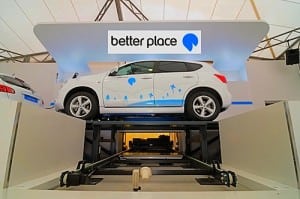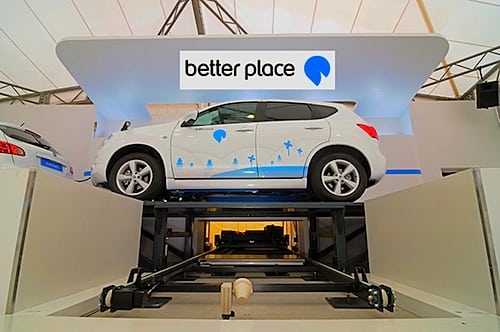
Better Place filed for bankruptcy in Israel. What could have saved the company?
Hindsight is always 20/20 but Better Place, once the promising darling of the new electric car era found its idea a little tougher than Shai Agassi expected. While swapping battery packs is a good idea to anyone buying into the “range anxiety” hype, it comes with hefty roadblocks. Building stations to house enough battery packs, keeping the place cold enough while charging the packs, as well as assuring battery packs freshness and quality requires a lot of electricity. Making a profit becomes harder than just installing chargers, as some companies have found out. In the end, the company’s shareholder, Israel Corporation decided it wasn’t going to make much money after only a year in operation. Is this another case of a great idea too early for its time?
The automobile industry is not ready to embrace a shared battery platform. Yet the idea of swapping battery packs and by the same token raising an electric car’s range to a theoretical unlimited range is very appealing. Should Better Place have concentrated on building a charging network first and later develop its battery swapping idea?
Battery Swapping vs Charging Network. If you follow the electric car, EV news it is obvious electric cars have a “limited range”, albeit more than enough for our daily commutes. The real work is in building charging stations and developing networks so that you can charge anywhere and receive a bill at then end of the month. Companies such as Coulomb Technologies understood this early enough and spun off their hardware arm ChargePoint to focus on their core strength. Coulomb Technologies now focuses on its charging network management. Instead Better Place insisted on swapping battery packs for electric cars and added the charging network later to its business model. Even with Renault is a partner it wasn’t enough.
Today Tesla Motors is hinting at the possibility of battery swapping, which means we could be gearing up with a vendor centric battery swapping world. Don’t laugh, it makes sense, at least for companies. Better Place saw the need for battery swapping for a distant future but only reluctantly added a charging network to its business model later.
Chicken or The Egg Dilemma. In a typical chicken or the egg first dilemma, should we build electric cars and let them charge at home first or should we build the charging infrastructure and hope carmakers will build cars? Remember 80% of our daily commute is less 40 miles. Or should we bypass the entire obstacle and make battery swapping a feasible system? The first question has already been answered by doing both at the same time. The latter has merit but it would have meant getting onboard carmakers early on. If there is one thing we know about carmakers, they defend feverishly their intellectual properties and are not too willing to share technologies… unless it makes financial sense.
Better Place had a great idea but it might have been too soon, too early. The automobile industry is a slow moving ship, despite enthusiastic commercial claims. It just cannot turn on a dime. Automakers are setup to build gasoline engines on frames and wheels. Switching overnight to an electric motor is asking an electrician to switch to electronics overnight. It can be done, but it takes time. It’s sad to see one of the pioneers of the renewal of electric car fold and we can only hope Better Place will find a way to rise from its perceived mistakes and iron out the kinks.







